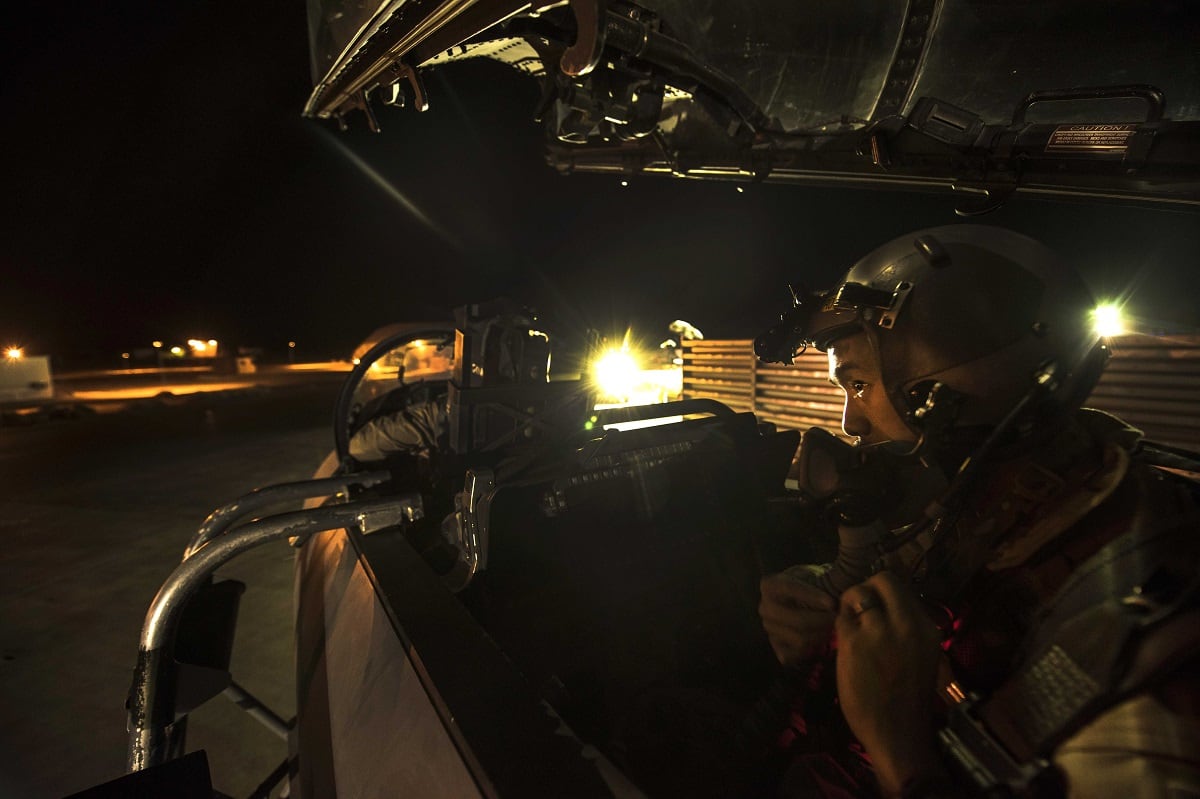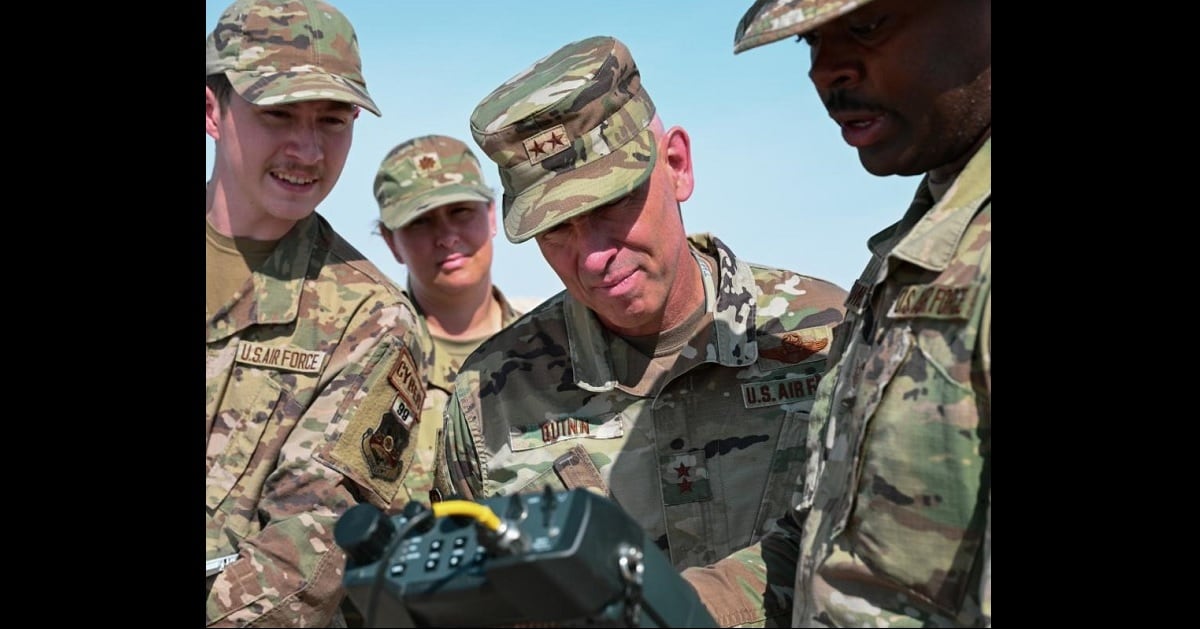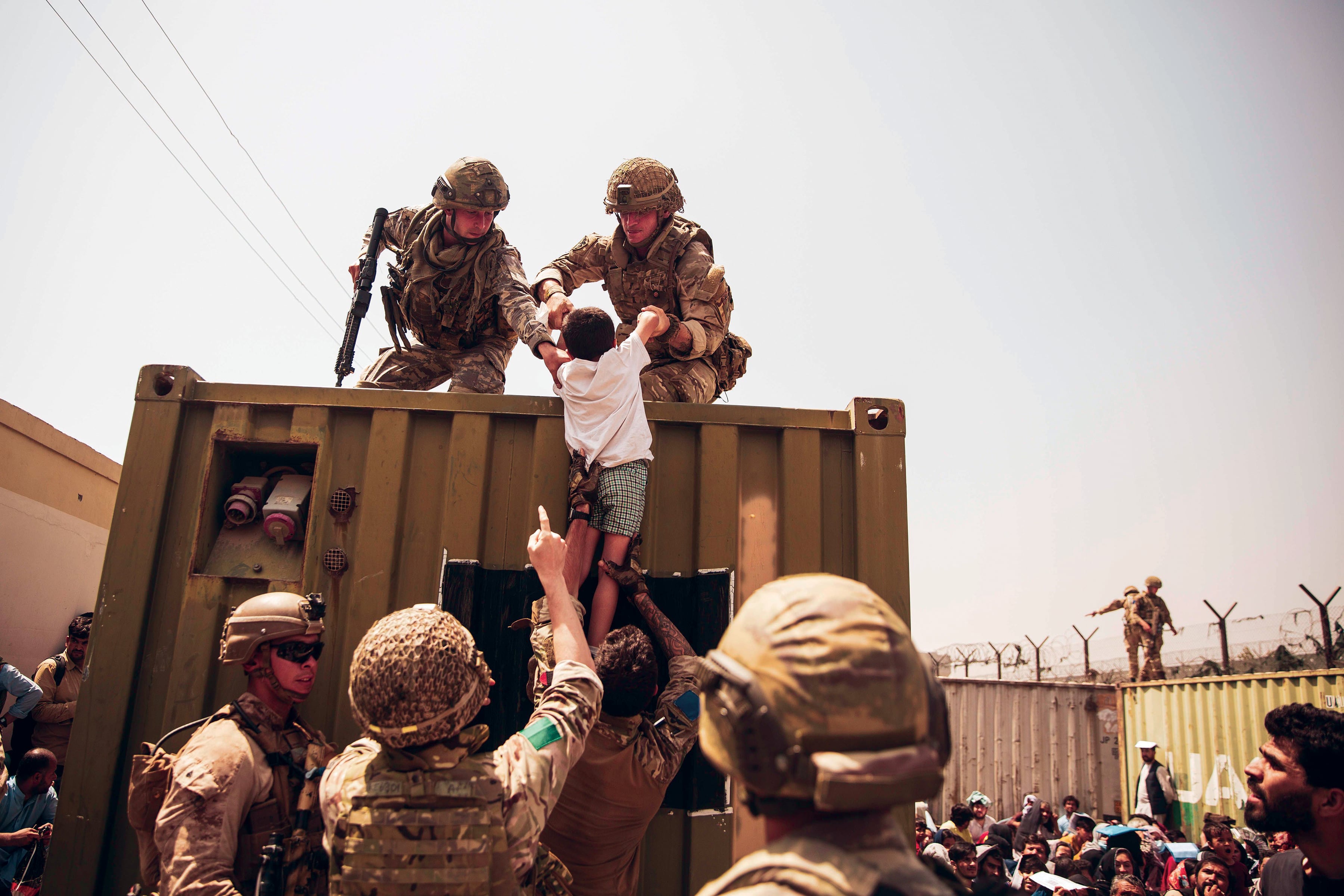As the U.S. scrambled to get the last of its troops out of Afghanistan in late summer 2021, the Pentagon fielded endless questions about how it could prevent the country from becoming the terrorist training ground it had been before 9/11.
Biden administration officials touted robust “over-the-horizon” capabilities to both gather intelligence and strike terrorist groups to keep them in check. But some two years after the Biden administration announced the drawdown, the U.S. military hasn’t struck a single target in Afghanistan, and U.S. military leaders now concede they lack sufficient resources to do so.
In August 2021, then Pentagon spokesman John Kirby insisted the administration would “maintain robust over-the-horizon counter-terrorism capability, the kinds of capabilities that you’ve seen us use in just the last 24-36 hours,” as the U.S. prepared to evacuate the last of its troops. “We still have that capability. We will use that capability,” an assertion Kirby repeated again this year, as Biden National Security Council spokesman, and also repeated to Military Times by multiple military officials.
RELATED

But the military commander in charge of that region didn’t sound so confident, warning that terrorist groups inside Afghanistan may soon be ready to launch attacks abroad.
“Specifically, ISIS-Khorasan, Senator,” Army Gen. Erik Kurilla, head of U.S. Central Command, told lawmakers during a Senate Armed Services Committee hearing in March. “It is my commanders’ estimate that they can do an external operation against U.S. or Western interests abroad in under six months with little to no warning,” he said, with the caveat that he believes the U.S. homeland is still safe.
The CIA did target and kill al-Qaida leader Ayman al-Zawahiri in July 2022. And the Taliban killed the suspected mastermind behind the 2021 ISIS bombing of Kabul’ airport’s Abbey Gate, that left 13 U.S. troops and about 170 Afghans dead during the chaotic U.S. withdrawal.
But neither of those involved the U.S. military, calling into question whether that “over-the-horizon” capability is as robust as was claimed, or simply has been delegated to the CIA, therefore is outside the U.S. military’s purview.
Keeping tabs
Counterterrorism experts are dubious not only that the U.S. can properly surveil terrorist activity in Afghanistan, but that the national security apparatus is willing to devote adequate energy to containing it.
“The U.S. is essentially flying blind in Afghanistan, especially compared to the ability to understand what was going on in the 2000s, the 2010s and up through the withdrawal,” according to former Pentagon counterterrorism official Seth Jones, now at the Center for Strategic and National Studies.
During the war in Afghanistan, the U.S. had the benefit of not only surveillance aircraft and other technology in-country, but military, intelligence and State Department personnel on the ground maintaining Afghan and Pakistani human information networks, said Jones, who once worked as an adviser and plans officer for U.S. special operations forces in Afghanistan.
“Even then ... there were still huge intelligence gaps when we had 100,000 forces there, plus NATO forces, plus some cooperation with Pakistan,” Jones said in an interview.
What capability the U.S. does have is hamstrung by the short amount of time any surveillance equipment can spend gathering information over Afghanistan or launching a strike, as much of that dwell time over a target is spent actually getting there, flying roughly a thousand miles to Afghanistan from where U.S. forces are stationed at al-Udeid Air Base.
Jones said that means targeting a high-value asset like al-Zawahiri is possible as a one-off, but without more resources close to the adversary, “you’re going to be very limited in conducting any kind of sustained campaign against Islamic State-Khorasan, al-Qaida or other groups operating from Afghan soil. That is the reality.”
RELATED

Kurilla’s Senate Armed Services Committee comments have been repeated at numerous other hearings since then, including one in April with the House Homeland Security Committee. There, a former Trump administration ambassador-at-large for counterterrorism shared similar concerns about the viability of reining it terrorism from afar.
“To dismantle a terrorist group, what’s needed is a sustained campaign to eliminate its leadership, its infrastructure, its foot soldiers and so on,” Nathan Sales, now a senior fellow at the Atlantic Council, told lawmakers. “It simply isn’t possible to defeat terrorists using an over-the-horizon strategy.”
In Somalia, for example, the U.S. canceled a rotational deployment that had been helping local forces beat back al-Shabaab, the largest and most well-funded wing of al-Qaida, in late 2020 on orders from President Donald Trump.
But 18 months later, the rotation was back on, as military leadership had complained that “commuting to work” was ineffective in that counterterror mission.
Sales believes that getting a handle on the Afghanistan situation will require not only more funding for CENTCOM counterterrorism operations, but a policy shift.
“If we want to make sure that terrorism remains relatively low on the hierarchy of threats, we have to keep mowing the grass,” in addition to countering China, and keeping an eye on a revanchist Russia that’s conducting a war of aggression on Ukraine, he said. “We have to keep a lid on the pot because God forbid there should be another catastrophic attack.”
More advanced drones that can spend more time in the air would be a start, but he said the U.S. should also looking into basing arrangements closer to Afghanistan, as it once had in Pakistan and Central Asia.
Jones echoed that sentiment, suggesting Pakistan, Central Asia or even U.S. naval ships deployed to the Indian Ocean as a more efficient launch point.
Fulfilling promises
Sales believes the “robust over-the-horizon” talk during summer 2021 was essentially lip service meant to ease the minds of the American public, as they watched 20 years of U.S. investment in Afghan security crumble on their television screens.
“The White House told us that ‘over-the-horizon’ would be capable of mitigating any terrorist threats in Afghanistan after the withdrawal,” Sales said. “One strike in 20 months is no one’s idea of threat mitigation.”
RELATED

Relying on the Taliban to take out U.S. adversaries like the Abbey Gate plotter is not a reliable strategy longterm, though it was discussed during Sales’ time in office by then-Taliban “peace” negotiator U.S. Ambassador Zalmay Khalilzad.
“The Taliban is not a trustworthy or reliable or capable counterterrorism partner,” Sales said. “We should not be outsourcing our responsibility, the government’s responsibility to protect Americans to a group that has the blood of countless Americans on its hands.”
Pentagon officials have pushed back on such criticism, pointing out that the most recent National Defense Strategy includes a counterterrorism plank, despite China taking center stage in terms of funding and attention.
During his March testimony, Kurilla described keeping tabs on terrorist activity within Afghanistan as “difficult but not impossible.”
“One of the things that we are trying to do is increase our intelligence, surveillance, reconnaissance,” he said. “We’re putting investment into long-duration, high-altitude, alternative airborne ISR that can go up for days and weeks.”
A Pentagon spokesman told Military Times, the Defense Department is confident they have what they need.
“DoD can monitor terrorist groups in Afghanistan and maintains capabilities to monitor potential threats and, if needed, to disrupt terrorist operations targeting the United States and our allies and partners,” Air Force Lt. Col. Phillip Ventura told Military Times.
That can include strikes, he added, but there are other options, “such as the facilitation of criminal prosecutions and the seizure or freezing of financial assets.”
A CENTCOM spokesman, Maj. John Moore, echoed that those two non-kinetic options, of arresting terrorist organizers and going after their finances, has helped disrupt their operations.
Despite that optimism, Sales has a warning.
“It’s a cliche, but it’s true,” Sales said. “Our enemies get a vote on whether they continue to fight and they’re voting ‘yes.’ "
Meghann Myers is the Pentagon bureau chief at Military Times. She covers operations, policy, personnel, leadership and other issues affecting service members.





